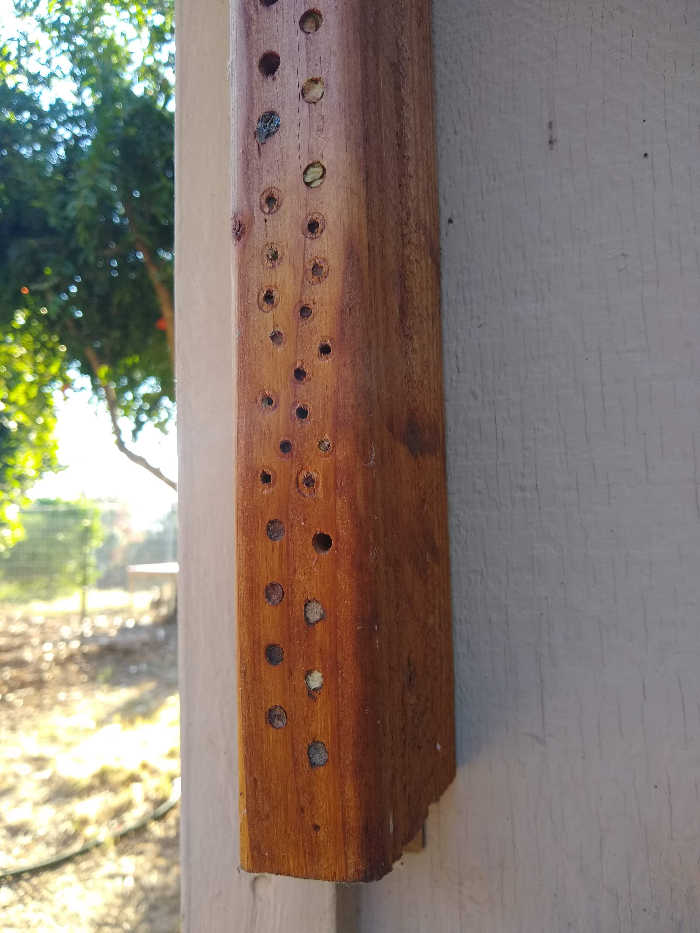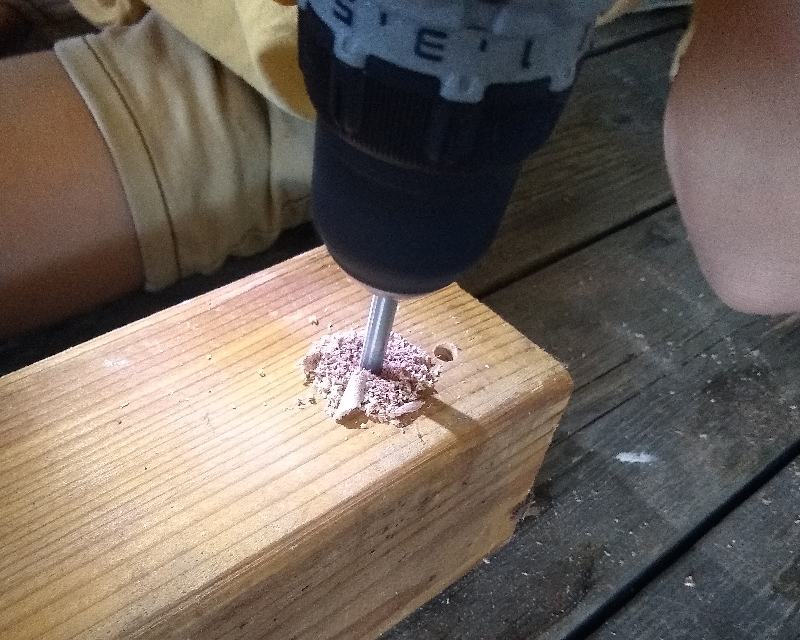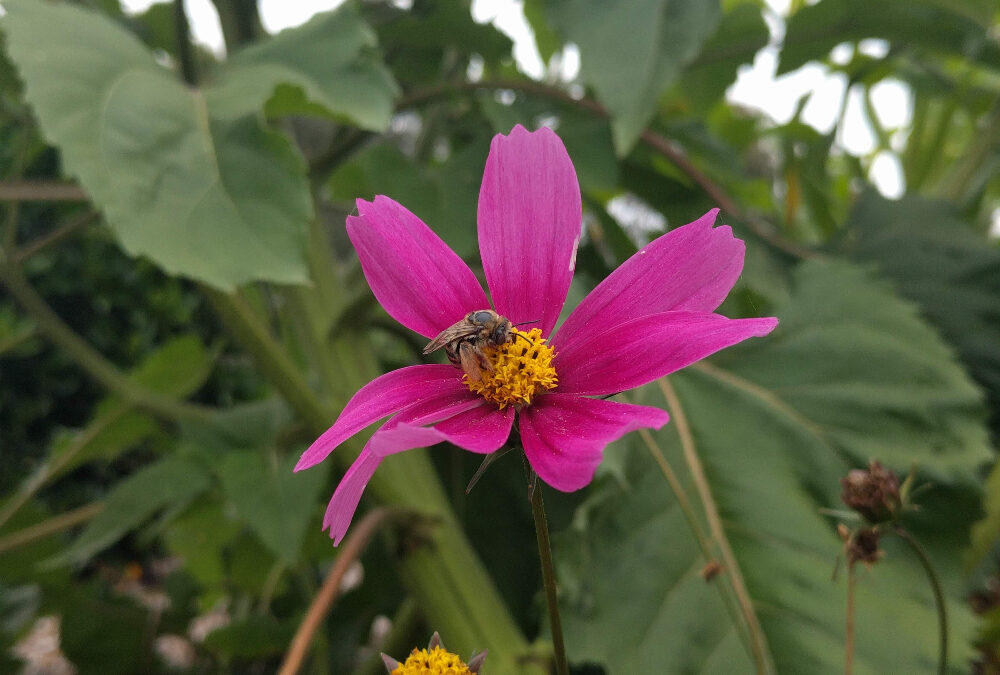A few years ago I built a nesting block for native bees. I was hoping to increase their numbers by giving them an attractive nesting site so that I could in turn receive their pollination of my vegetables and fruit trees. I additionally planted flowers.
My efforts appear to have worked. I see good pollination throughout the yard, and the holes in the nesting block are almost all filled. So it’s time to build a new block and provide even more nesting sites for even more native bees.
Where do native bees nest?
Most bees that are native to Southern California are loners; they don’t live in colonies like honey bees. They build nests for their young either in the ground or in a cavity, a hole.
This spring I watched native bees dig nests in the dirt in a crack in our driveway.

And I watched other native bees build their nests in the holes that my kids and I drilled into a 2×4 and attached to the wall of our garage a few years ago: our native bee nesting block.

Building a native bee nesting block
With this second nesting block, we chose a scrap 4×4 made of redwood. Our first one was a 2×4 made of pine.
I doubt the choice of wood matters, but the sizes of the holes must since different bees are different sizes. Some are so small that they’re hard to notice.

While others are so big and loud that they can’t be missed.
In our first nesting block we drilled holes from 1/8 to 3/8-inch wide. The small ones were filled first, but eventually all of the large ones also had nests in them.

So the kids started drilling into the redwood with bits of the same sizes as the first nesting block.

The holes should be deep but not through. They should be dead-end holes.
I attached our first nesting block to the northwest corner of our garage’s wall using metal brackets. While I have read that a nesting block facing south or southeast is ideal, such orientation is clearly not vital.

It doesn’t seem that the bees are particular about the height of the nesting block either. Mine is between three and six feet off the ground.
Shade during the heat of the day might be important though. An eave provides shade for my nesting block, and it keeps rain off the block too.
Check out these resources for more detailed information on native bee nesting blocks:
- “Nests for Native Bees” from the Xerces Society.
- California Bees and Blooms. See my review of this book here.
Bee food first
Remember, however, that before building habitat for native bees, you must have food available for them or else your effort will be wasted. Food means flowers, the right kinds of flowers.
For guidance on this, see my posts, “Flowers for bees all year in Southern California” and “Growing a bee garden.”

You may have noticed that there are no ads on this website. That’s because I rely exclusively on your direct support to keep them up and coming. Thanks for all the support.
All of my Yard Posts are listed here.




Nice! What do you finish it with?
Hi Jessica,
No finish. Just bare wood.
Sounds good, must have been the lighting. And any particular bracket?
Just a little L bracket for the 2×4. I will have to use a slightly bigger one for the 4×4 though.
Good to know the hole sizes, 1/8 to 3/8s! I have all the drill bits and some pieces of wood already sitting out in the yard. I’m going to try this!
Tell me how it goes, Randy. Don’t be discouraged if there are no visitors until the spring of next year, but I hope you get some sooner.
You can actually clean out the holes in the older block using the same size drill bit as you used to make the hole. I don’t know what time of year, but obviously outside the nesting season. You could probably find out online.